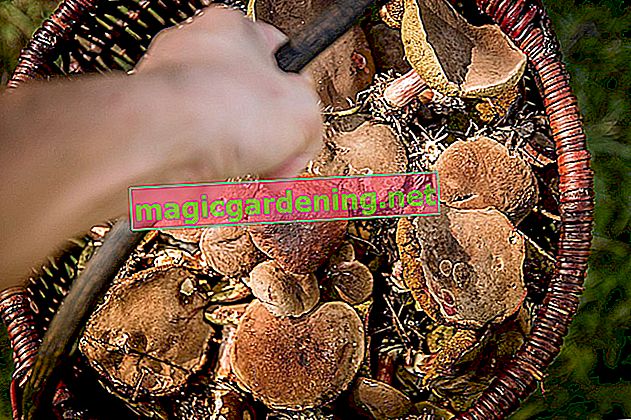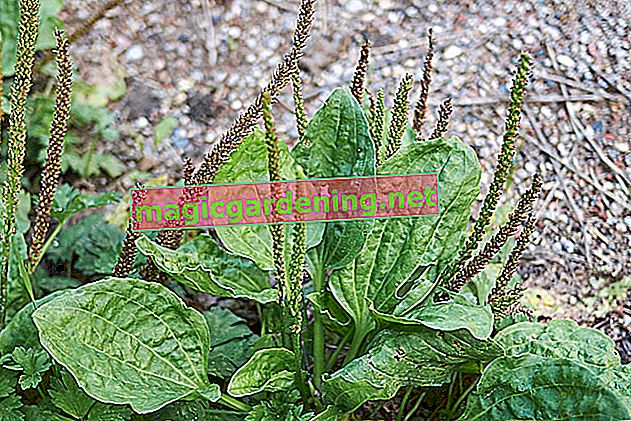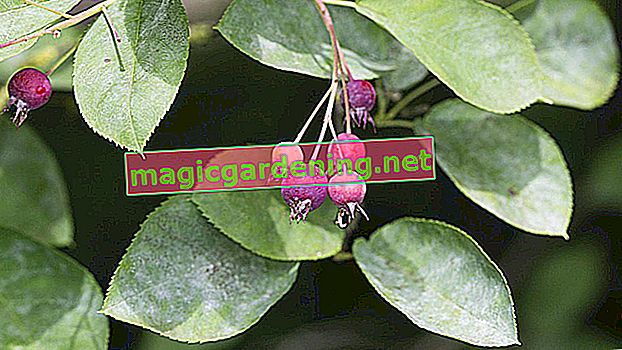
This is how Kindel make it big as young orchids
Offshoots of an orchid that develop in close proximity to the trunk or to the bulbs are called Kindel. These seedlings have all the characteristics of their mother plant. In order to grow these tiny plants into splendid orchids, patience is required, because you must not separate the offspring too soon. How to do it right:
- A child is mature with at least 2 leaves and 2 to 3 aerial roots
- Ideally, pot the orchid for easy separation
- First disentangle any intertwined air roots with your fingers to identify the best interface
- Separate the baby from the mother plant with a disinfected, sharp knife or scalpel
also read
- How to multiply orchids masterfully - instructions for cuttings and seedlings
- Popular orchids and their popular names - an overview
- These orchids tolerate light shade - an overview
Since seedlings of an orchid have particularly sensitive roots, please use a mix of moist sphagnum and peat for planting in the first phase. Anyone who does not use peat due to ecological concerns puts Kindel in a mixture of moss and coconut fibers, moistened with lime-free water.
Separate and plant cuttings correctly - this is how it works
The use of unrooted cuttings for the propagation of orchids is rarely practiced. An exception is the climbing vanilla orchid, which is mainly replicated in this way. Monopodial orchids, such as the Vanda orchid, produce rooted cuttings from their main axis, which - like Kindel - are viable from a certain size. Separating and planting these cuttings is not difficult.
- In the middle of the vegetation phase, cut off non-flowering head cuttings with a length of 15 cm
- Do not cut off rooted stem cuttings until 2 leaves and 2-3 aerial roots have grown on them
- Small pots fill with fine-grain orchid substrate, (€ 7.98 at Amazon *) coconut and wood fibers or vermiculite, peat and moss
Two thirds of the leaves that are not rooted are defoliated and placed in the potting soil. When planting rooted cuttings, please make sure that they do not get deeper into the substrate than the first pair of leaves. Instead of watering, immerse the pots in filtered, lukewarm rainwater and let the moisture run off well so that waterlogging does not build up.
Properly caring for seedlings and cuttings - this is what you should pay attention to
Although seedlings and cuttings are obtained in different ways, they all pull together in terms of care. Bright lighting conditions, warm temperatures and high humidity are required. This is how growth and root formation progress rapidly:
- Place the seed pot in a heatable indoor greenhouse or under a transparent hood
- When using a plastic bag, use 2-3 wooden sticks as spacers
- Place in a bright, not full sun location at temperatures around 25 degrees Celsius
- If the substrate dries, immerse the pot briefly in lukewarm, lime-free water
- Ventilate the mini greenhouse (€ 6.96 at Amazon *) or cover briefly several times a day without causing a cold draft
The creation of a tropical, humid rainforest climate in the immediate vicinity of the offshoots contributes significantly to the development of further roots and new leaves. Until then, please do not give any fertilizer. Only after a fresh sprout can the cover be removed and the application of highly diluted orchid fertilizer can be started. Kindel and cuttings usually take 2 to 3 years until the first flowering.
Propagation the uncomplicated way - How it works with sinkers
If a species of orchid tends to climb and tendrils, like terrestrial vanilla, it gives the gardener the opportunity to multiply with sinks. These are non-flowering, flexible shoots or tendrils that you can use the following technique to encourage the formation of an independent root system:
- Pull a young, healthy shoot to the ground in early summer
- Mark the spot in order to set up a pot with airy, loose, moist potting soil
- Plant the middle part of the tendril 2-3 cm deep in it, but do not separate it from the mother plant yet
- Tie the tip of the shoot to a wooden stick
While the orchid continues to supply the sinker with nutrients, a new root system sprouts from the buried shoot. The process is accelerated when you lightly scratch the bark with a razor blade. If a fresh leaf appears on the fixed shoot tip, the rooting proceeds as desired. Once the seed pot is completely rooted, you can detach the sinker and care for it like an adult orchid.
Tips
Seedlings always transform into a younger version of their mother plant - with one exception. If a blue orchid brings Kindel into being, these only produce blue flowers if it is a Vanda coerulea. Blue Phalaenopsis owe their color to a horticultural trick that only lasts for one flowering period. Their seedlings create a white flower dress at the end.








